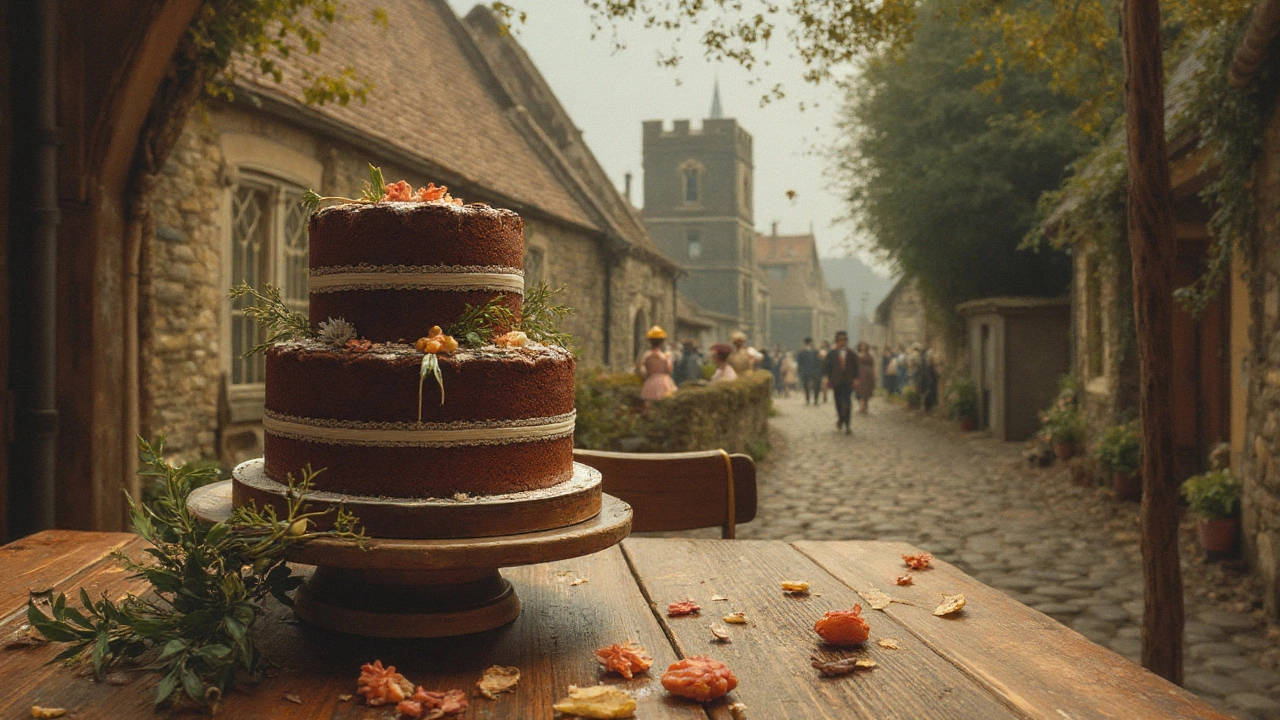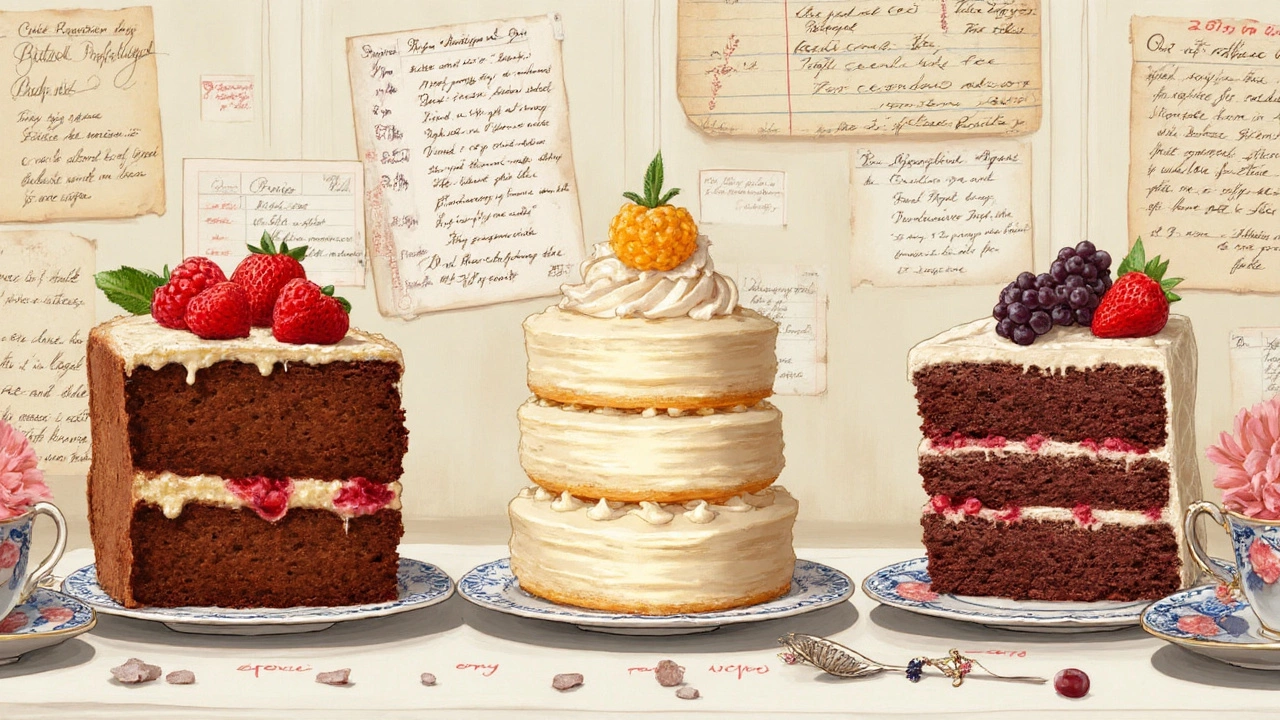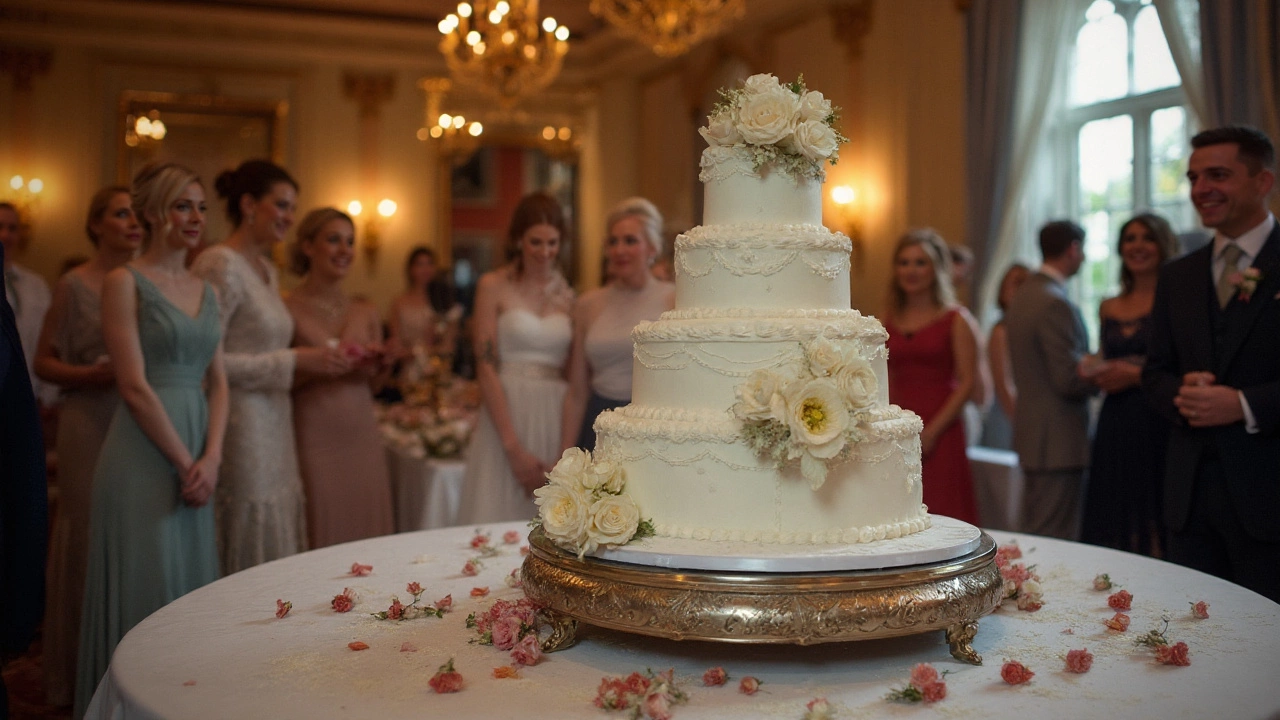Picture this: the bride and groom are standing at the center of the reception, hands intertwined on a silver knife, ready to cut the first slice. For generations—way before fondant peonies or edible gold leaf—this timeless scene has played out. But what did that iconic cake look like in the past? The answer might surprise you, especially if you've only seen modern towers of buttercream. Ask your grandmother, or your favorite wedding planner, and you’ll often get one answer: nothing says tradition quite like a classic fruitcake topped with pristine white icing. But there’s a delicious story behind it all.
The Origin of the Traditional Wedding Cake
Wedding cakes haven’t always been sweet, creamy, or even cakes at all. The roots go back to ancient Rome, where wedding guests would literally break a barley or wheat cake over the bride’s head as a fertility blessing. No pretty sugar flowers there! Fast-forward to medieval England, and things began to evolve. Guests would stack small buns into a huge pile and challenge the couple to kiss over the mound—if they succeeded, good luck followed. It wasn’t until the seventeenth century that wedding cakes started resembling what we see today: grand, frosted, and layered. Queen Victoria, with her white-iced fruitcake in 1840, set the trend for white wedding cakes, associating them with purity and luxury.
By the late 19th and early 20th centuries, wedding cakes had become true showstoppers. The Royal Family only cemented the tradition: Princess Elizabeth (future Queen Elizabeth II) had a towering nine-foot fruitcake for her 1947 wedding, decorated with regal motifs and marzipan. Royals and celebrities alike carried on the fruitcake tradition, right through to Princess Diana in 1981 and Prince William in 2011. “Fruitcake is enduring because of its rich symbolism,” says Sarah Haywood, renowned British wedding planner,
“It represents abundance, prosperity, and the ability to endure—much like a long-lasting marriage.”
The shift to lighter sponge cakes is a very recent trend, strong in the U.S. and Australia but less so in the UK, where fruitcake is still the gold standard for 'traditional.' But let’s be honest—not everyone wants to bite into a heavy, boozy fruitcake on a summer afternoon. That’s where the twists begin.
The Anatomy of a Classic Wedding Cake
Break down the ovens and you’ll find three things that made a cake 'traditional' in British and Commonwealth weddings: dense fruitcake packed with dried fruit and nuts, a thick layer of marzipan, and a smooth white royal icing shell. Layers were separated by cardboard (yep, really!) and stacked using wooden dowels—an engineering feat as much as a culinary one. These cakes were built to last for weeks, sometimes even years. Slices were often sent as souvenirs to absent relatives or even frozen for a couple's first anniversary celebration.
Here's what you usually found in a classic British wedding fruitcake:
- Currants, raisins, sultanas
- Chopped glace cherries, candied peel
- Warming spices (think cinnamon and nutmeg)
- Nuts (often almonds or walnuts)
- A good glug of brandy or rum
If you’ve seen fancy modern cakes, you’ll recognize some of these touches—but what most don’t realize is how practical these traditions were! The hard icing and sturdy fruitcake meant the masterpiece wouldn’t collapse or spoil, no matter how wild the afterparty got. Even today, some couples request a top tier of fruitcake so they can freeze it for the first child’s christening, echoing a Victorian custom.

Regional Variations and Cultural Traditions
While the British fruitcake is legendary, it’s far from the only contender for 'most traditional.' Different cultures bring their own sweets to the party. In Italy, you’ll find millefoglie—crisp pastry layered with pastry cream and berries. In France, couples used to serve croquembouche—puffed choux buns bound with caramel into a dramatic spire. Sweden is famous for Prinsesstårta, a dome of light sponge, pastry cream, raspberry jam, and bright green marzipan. In the southern United States, families argue for classic red velvet or hummingbird cake as the true wedding cake, steeped in local tradition.
Here’s a quick table showing classic wedding cakes by country:
| Country | Traditional Wedding Cake |
|---|---|
| United Kingdom | Rich fruitcake with marzipan and royal icing |
| Italy | Millefoglie (layered pastry) |
| France | Croquembouche |
| USA (South) | Red velvet or hummingbird cake |
| Sweden | Prinsesstårta |
| Jamaica | Rum cake with dried fruit |
With flavors ranging from lemon and almond to coconut and dark chocolate, the idea of “traditional” really depends on where you’re saying “I do.” But one thing runs throughout—wedding cakes are designed to impress and to bring everyone together for a sweet moment.
From Royal Cakes to Modern Classics
Let’s talk numbers. In a 2023 survey by UK wedding site Hitched, 41% of British brides still chose fruitcake for at least the top tier, even if the lower layers were lighter sponges like vanilla or lemon. In America, the tables flip: only about 7% opt for fruit, with vanilla and chocolate way out in front. It’s a trend that reflects changing tastes—less old-school formality, more personal flavor.
But even in a world of cake pops and naked cakes, the skeleton of tradition remains. Most couples still want a multi-tiered design with white icing, just minus the candied peel. Fondant has replaced royal icing for many, giving a smooth, flawless look. Buttercream roses and custom sugar figurines have grown wildly popular, but the symbolism—unity, prosperity, and shared sweetness—sticks around.
Bakeries have gotten creative with texture, color, and flowers, but the idea of 'the big cake moment' feels eternal. Quoting wedding historian Allison T. Smith:
“The wedding cake always signals the turning point of the reception. That first slice is the beginning of the couple’s new life—and it’s often the memory people photograph most.”
So whether you love the rich, boozy taste of classic fruitcake, or the soft bite of sponge with fresh berries, the heart of tradition is choosing a cake that fits your story. Classic tiers will never really go out of style.

Tips for Choosing Your Traditional Wedding Cake
So you’re planning your dream wedding and want to honor tradition—but maybe dried fruit isn’t your thing. Here’s the secret: there’s lots of wiggle room. If you want the “classic” look, you can combine the visual hallmarks (white icing, elegant piping, a few marzipan roses) with a flavor you actually enjoy. Many bakeries offer hybrid cakes: the top tier as fruitcake to please family, lower layers as carrot, chocolate, or lemon for the guests.
- Talk to your baker about soaking the fruitcake with lighter liqueurs for a more subtle flavor.
- Ask for fondant or buttercream instead of thick royal icing for a softer bite.
- Incorporate heirloom decorations, like family brooches or hand-painted toppers, for that personal touch.
- When freezing a top tier, wrap it super tightly in plastic and foil—less freezer burn, more tasty anniversary cake.
- Serve the cake with fresh cream or a scoop of sorbet for balance, especially in summer weddings.
Want to nod to your heritage? Consider mixing traditional elements with your favorite flavors. For example, ask for rum-soaked fruitcake decorated with modern sugar flowers, or jazz up a simple white cake with royal icing lace inspired by your grandma’s wedding dress.
And one more tip: don’t fear the fruitcake. When made well (and with quality ingredients), it can shine—rich, moist, and surprisingly crowd-pleasing. Even if you go modern with flavor, the structure and wow-factor of those beautiful multi-tiered cakes will bring tradition right to your table.
When planning, remember that cake trends may come and go, but the magic of that first slice and shared laugh is timeless. Whether you go with classic fruitcake, golden sponge, or something totally wild, let your cake tell your story—and snap lots of photos, because these traditions only get sweeter with time.

